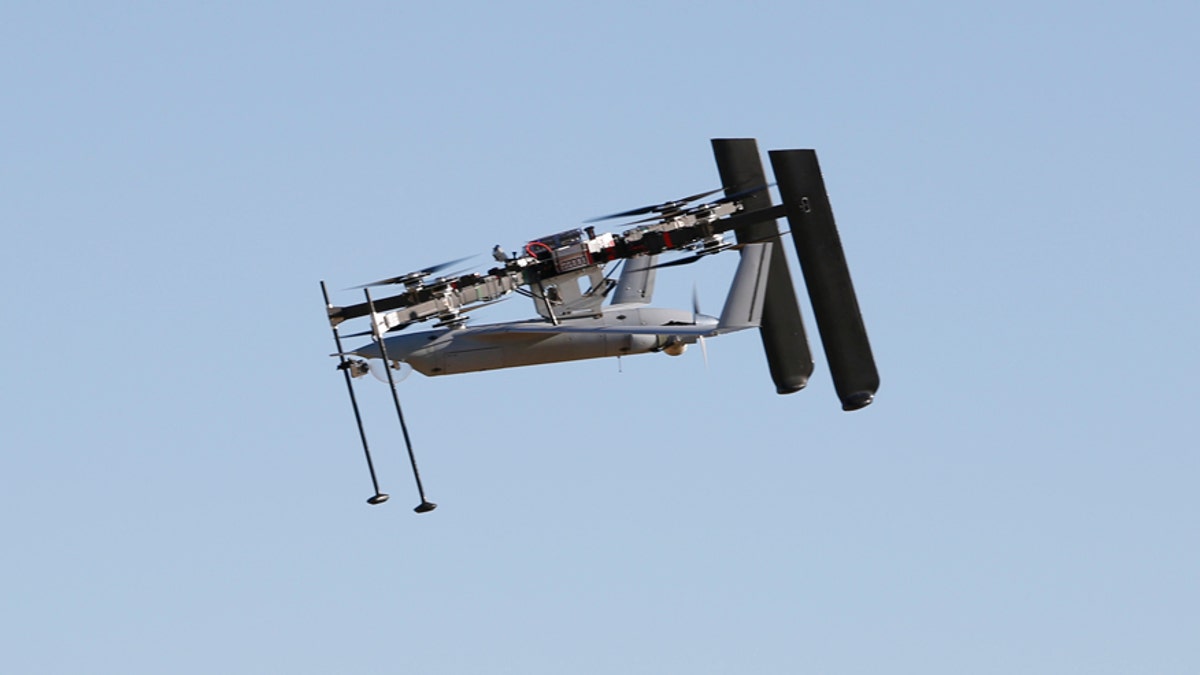
(Insitu, Inc. 2014)
Due in large part to the fact landing fixed-wing drones is easier said than done, Boeing subsidiary Insitu recently unveiled an incredibly innovative drone launch and recovery system. Called the Flying Launch and Recovery System (or FLARES), Insitu's system makes use of a massive quadcopter aircraft which serves as both a launch pad for a fixed-wing drone, as well as its eventual retrieval vehicle. While most drone operators may remain content with soft crash landings for their drones, this tech should prove helpful for, say, the military to safely land UAVs on warships.
Just this past August, Insitu ran a series of tests with FLARES, primarily using its ScanEagle unmanned aerial vehicle as the subject for the quadcopter to launch and catch. In these tests, Insitu determined that the prototype FLARES system could reliably launch and retrieve a "low weight" version of a ScanEagle -- which ostensibly means that the FLARES drone could launch and catch any winged UAV that weighs around 39 to 44 pounds
Related: US drone operators will soon have to register their aircraft with the federal government
As seen in the video posted above, the FLARES process begins with the quadcopter flying straight up into the air with the ScanEagle UAV attached to the bottom of the craft. As the quadcopter hovers, the UAV begins revving up before disconnecting and accelerating into flight. At this time, the copter returns to its launch site where operators then attach the recovery system to the bottom it before it launches itself back into the sky. As the UAV navigates back toward the quadcopter, the recovery system (which essentially functions as if it were a vertical version of arresting gear you'd find on an aircraft carrier) catches hold of one of the fixed-wing drone's wings.
Once the quadcopter catches the UAV, operators then use a set of pulleys on the ground, which relieve tension from the cable's on-ground anchor and safely reel in the craft. The pulley system works in similar fashion to that of a fishing reel and absorbs much of the drone's momentum during capture. According to Insitu, the entire FLARES system was built using existing commercial stock, and the company is hoping to adapt the technology to work aboard ships. Moreover, advancements in both the tether and the quadcopter should allow future models to operate with cargo heavier than the ScanEagle UAV.
Although these tests are the first that Insitu has conducted, the results look incredibly promising for mitigating fixed-wing drone crashes during landing.




















